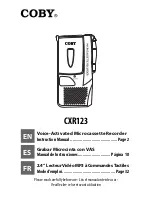
TR-2100 User Manual
74
Time Measurement
The TR-2100 uses the GPS navigation system as a source of absolute time. This generates
UTC (universal co-ordinated time), which is the modern version of GMT (Greenwich Mean
Time). This ensures that the time reference for each triggered event is accurate to better
than 100 ns. A 1 pps (pulse per second) output from the receiver is used to synchronize a
temperature compensated crystal. This in turn is used to derive the recorder’s sampling
clock. This means that all the TR-2100s in the world sample at exactly the same time to
better than 50 ns. Not only is the acquisition engine phase-locked to the GPS, but it is
arranged such that a sample is taken at the exact second marker. The outcome of this is that
any phase information computed from this data is related to an exact point in time.
Frequency Measurement
The TR has two frequency channels that are calculated from two defined voltage channels.
This allows split bus and generator synchronization to be recorded. The TR-2100 can be
triggered by a frequency difference measurement.
The TR-2100 uses the zero crossing method for extracting frequency. The signal is first
filtered with a recursive IIR filter to remove non 50 Hz or 60 Hz components. The exact
position of each zero crossing is found using similar triangles to determine the sub sample
position. Both positive and negative crossings are measured. The four period measurements
over two cycles are averaged. The inverse is taken to yield the frequency. Any
measurements that fall outside the fundamental fre/- 5 Hz are ignored.
Vector Measurement
The Cartesian vectors for every channel are generated twice per cycle. The angle is
corrected for 180
°
inversion. This form can be converted into the polar notation for
calculation of the derived parameters.
The data for one cycle are multiplied by sine and cosine tables to give the Cartesian co-
ordinates. Since the sample clock is locked to the 1 PPS signal from the GPS receiver, the
derived vector angle is related to absolute time. The reported angle is that at the left hand
end of the data window. The amplitudes are divided by
√
2 to give the equivalent RMS
value.
Содержание TR-2100
Страница 2: ......
Страница 6: ...iv ...
Страница 10: ...TR 2100 User Manual 4 ...
Страница 16: ...TR 2100 User Manual 10 ...
Страница 24: ...TR 2100 User Manual 18 ...
Страница 34: ...TR 2100 User Manual 28 ...
Страница 38: ...TR 2100 User Manual 32 ...
Страница 51: ...TR 2100 User Manual 45 Figure 10 Sliding Out CPU Assembly Potentiometer Figure 11 PSU Potentiometer ...
Страница 54: ...TR 2100 User Manual 48 Figure 12 Analogue Input Board Jumpers ...
Страница 78: ...TR 2100 User Manual 72 ...
Страница 94: ...TR 2100 User Manual 88 ...
Страница 98: ...TR 2100 User Manual 92 ...
Страница 99: ...TR 2100 User Manual 93 Appendix V System Drawings ...
Страница 100: ...TR 2100 User Manual 94 ...
Страница 101: ......
Страница 102: ......
Страница 103: ......
Страница 104: ......
















































